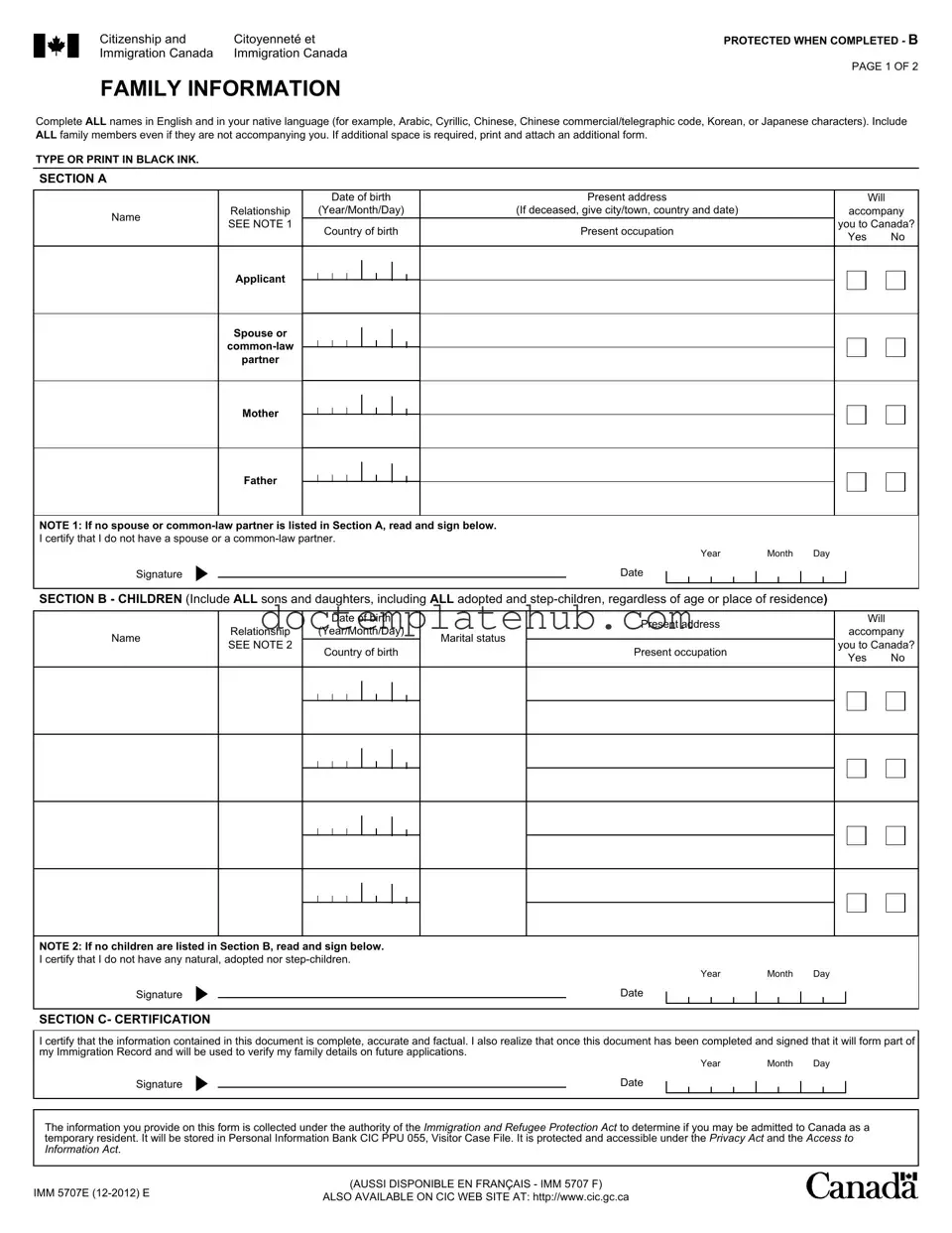What is the purpose of the Imm5707 form?
The Imm5707 form, also known as the Additional Family Information form, is required for individuals applying for a Temporary Resident Visa (TRV) to Canada. It collects essential details about the applicant's family members, including spouses, children, and parents, to assess their eligibility for entry into Canada.
Who needs to fill out the Imm5707 form?
This form must be completed by each person who is 18 years of age or older. Additionally, a minor traveling alone must also fill out this form. It is specifically for passport holders from certain countries, including Argentina, Brazil, Malaysia, Russia, Saudi Arabia, and South Africa. If your passport is from a different country and you need a TRV, you will need to complete the Additional Family Information (IMM 5645) instead.
What information is required in Section A of the form?
In Section A, you must provide personal details for yourself, your spouse or common-law partner (if applicable), and your parents. This includes their full names, dates of birth, countries of birth, present addresses, and occupations. You must also indicate whether each person will accompany you to Canada by checking "Yes" or "No."
What should I do if I do not have a spouse or common-law partner?
If you do not have a spouse or common-law partner, you must read the note provided in Section A, sign, and date the declaration confirming that you do not have one. This step is crucial for the accuracy of your application.
What details are needed for children in Section B?
Section B requires you to list all of your children, including married, adopted, and step-children, regardless of their age or current residence. You must include their full names, dates of birth, relationships, countries of birth, marital statuses, present addresses, and occupations. Indicate if they will accompany you to Canada by checking "Yes" or "No."
What if I do not have any children?
If you do not have any children, you must read the note in Section B and sign the declaration confirming that you have no natural, adopted, or step-children. This ensures that your application remains accurate and complete.
How should I complete the form?
The form should be completed in black ink, and all names must be written in English as well as in your native language if applicable. If you need more space, you can print and attach additional forms. Ensure that all information is complete and accurate to avoid delays in processing.
What happens if I do not sign the form?
It is essential to sign and date the form in the designated areas. If you fail to do so, your application will be returned to you. Signing the form certifies that you understand the questions and that the information provided is true and complete.
How is the information collected on this form used?
The information you provide is collected under the authority of the Immigration and Refugee Protection Act. It is used to determine your eligibility for entry into Canada as a temporary resident. Your information will be stored securely and protected under the Privacy Act and the Access to Information Act.
